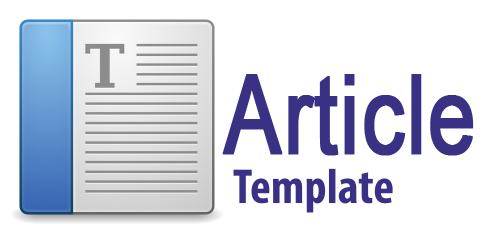Analisis Potensi dan Tantangan Pemanfaatan Artificial Intelligence (AI) dengan Metode Simple Additive Weighted (SAW)
DOI:
https://doi.org/10.31004/jutin.v8i2.40192Keywords:
Artificial Intelligence, Simple Additive Weighting, Potential AI, AI ChallengesAbstract
Artificial Intelligence technology is becoming an essential component in education, especially for students, due to AI's potential to enhance learning efficiency, provide personalized solutions, and improve digital skills. However, AI utilization also presents challenges, such as over-reliance on technology and data privacy issues. This research aims to analyze the potential and challenges of AI implementation in the learning process among Industrial Engineering students. This study employs the Simple Additive Weighting (SAW) method to evaluate various criteria related to the benefits and challenges of using AI. Data were collected through questionnaires from 90 Industrial Engineering students at the Kalimantan Institute of Technology and The Indonesian institute OF technology & business. The results indicate that AI has significant potential in enhancing information access, task efficiency, and students’ overall learning experience. On the other hand, the main challenges faced by students include reliance on AI, reduced critical thinking skills, and concerns about data security and privacy.References
Auliyalloh, A., Quentara, L. T., & Rahmatika, D. (2023). Pemilihan Alternatif Handphone Android dengan Metode Simple Additive Weigthing. 2(1), 5–12.
Dicoding Intern. (2020). Apa itu Machine Learning? Beserta Pengertian dan Cara Kerjanya. https://www.dicoding.com/blog/machine-learning-adalah/
Hadian, T., & Rahmi, E. (2023). Berteman dengan ChatGPT: Sebuah Transformasi dalam Pendidikan. EDU PUBLISHER.
Hidayanti, W., & Azmiyanti, R. (2023). Dampak Penggunaan Chat GPT pada Kompetensi Mahasiswa Akuntansi: Literature Review. Seminar Nasional Akuntansi Dan Call for Paper (SENAPAN), 3(1), 83–91. https://doi.org/10.33005/senapan.v3i1.288
Jaya, H., Sabran, D., Pd, M., Ma, M., Djawad, Y. A., Sc, M., Ilham, A., Ahmar, A. S., Si, S., & Sc, M. (2018). Kecerdasan Buatan. Fakultas MIPA Universitas Negeri Makassar.
Kusuma, P. D. (2020). Machine Learning, Teori, Program Dan Studi kasus. Deepublish.
Mardiawati, & Pradipta, A. (2024). Penerapan Metode SAW untuk Evaluasi Kinerja Karyawan di Sektor Pendidikan. 1(1), 14–21.
Putri, V. A., Sotyawardani, K. C. A., & Rafael, R. A. (2023). Peran Artificial Intelligence dalam Proses Pembelajaran Mahasiswa di Universitas Negeri Surabaya. Prosiding Seminar Nasional Universitas Negeri Surabaya, 2, 615–630.
Rizky, M., & Nandyatama, R. (2023). Polemik ChatGPT: Bagaimana Perguruan Tinggi Harus Bersikap? https://uia.fisipol.ugm.ac.id/polemik-chatgpt-bagaimana-perguruan-tinggi-harus-bersikap/
Rochim, A. A. (2024). Kecerdasan Buatan: Resiko, Tantangan Dan Penggunaan Bijak Pada Dunia Pendidikan. Antroposen: Journal of Social Studies and Humaniora, 3(1), 13–25. https://doi.org/10.33830/antroposen.v3i1.6780
Rosnelly, R. (2012). Sistem Pakar; Konsep dan Teori. Penerbit ANDI.
Rumaisa, F., Puspitarani, Y., Rosita, A., Zakiah, A., & Violina, S. (2021). Penerapan Natural Language Processing (NLP) di bidang pendidikan. Jurnal Inovasi Masyarakat, 1(3), 232–235. https://doi.org/10.33197/jim.vol1.iss3.2021.799
Santoso, J. (2023). Kecerdasan Buatan (Artificial Intelligence). Yayasan Prima Agus Teknik dan Universitas STEKOM.
Ully, M., Baharuddin, Abraham Manuhutu, & Heru Widoyo. (2023). Penerapan Kecerdasan Buatan Dalam Sistem Informasi: Tinjauan Literatur Tentang Aplikasi, Etika, Dan Dampak Sosial. Review Pendidikan Dan Pengajaran, 6, 3–7. https://journal.universitaspahlawan.ac.id/index.php/jrpp/article/view/20719/14884
Downloads
Published
How to Cite
Issue
Section
License
Copyright (c) 2025 Muhamad Aldi Azhara, Lilia Trisyathia Quentara, Agus Topo Subekti

This work is licensed under a Creative Commons Attribution-ShareAlike 4.0 International License.


